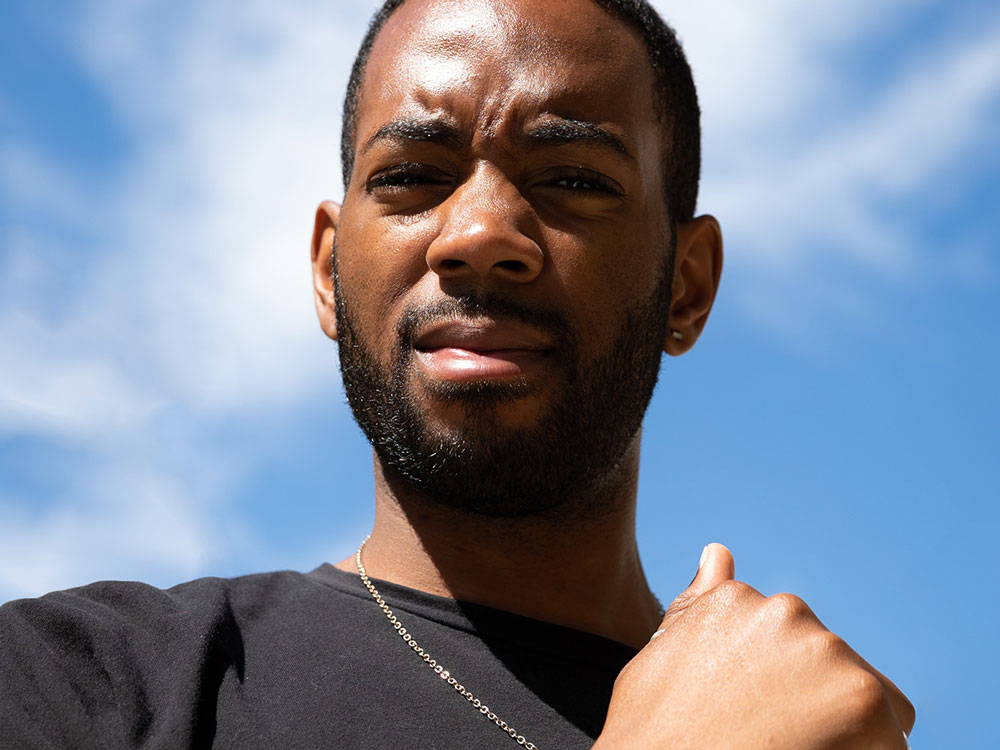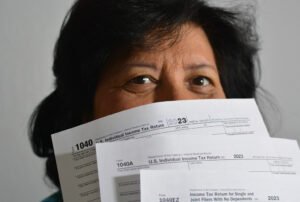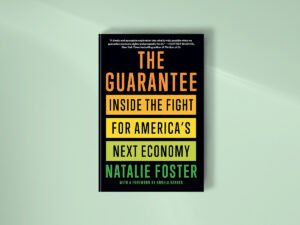

The Paycheck Protection Program (PPP) was one of the most widely used programs during the pandemic. A paper by Massachusetts Institute of Technology (MIT) economist David Autor and nine colleagues reports that 94 percent of all eligible businesses made PPP claims. The authors further point out that the program’s $800 billion price tag was roughly the same amount as was distributed through the three rounds of individual relief (“stimulus”) checks, and it was $120 billion more than was provided in income support through unemployment insurance payments (56).
Titled “The $800 Billion Paycheck Protection Program: Where Did the Money Go and Why Did It Go There?” and published in the Journal of Economic Perspectives (a publication of the American Economic Association), the economists’ report provides a wide-ranging assessment of the paycheck support program. Spoiler alert: while the program was intended to help businesses stay afloat and keep workers employed, less than a quarter of the PPP money spent went to paychecks, the key component to keeping people employed.
Remembering PPP’s History
As many NPQ readers will recall, PPP came into being as a core part of the $2.2 trillion CARES Act, passed by Congress near the start of the coronavirus pandemic, when tens of millions of people were losing their jobs. (CARES stood for Coronavirus Aid, Relief, and Economic Security Act. A summary of its full provisions is here.)
The core idea behind PPP was to subsidize small businesses to keep more people on staff by providing loans that would be converted into grants (i.e., forgiven), provided that 75 percent of the funds went to wages. But this was quickly reduced to 60 percent. Further, as Autor and team point out, there were ultimately many other ways to spend less than 60 percent of PPP money on wages and still receive loan forgiveness.
When PPP was rolled out, loan distribution was chaotic. The initial CARES legislation charged banks with processing loans, while the US Small Business Administration was responsible for reviewing disbursements and approving loan forgiveness after the fact. The reality is that the scale of distribution was overwhelming, and many banks responded by processing their existing customers first.
As a result, in the first month, hundreds of thousands of businesses and nonprofits were unable to get any support at all. As one reader wrote to NPQ at the time, “I don’t mind jumping through hoops to keep my organization healthy and solvent, but it’s a bit out of control. Things are becoming dog-eat-dog, and it is very unfortunate.”
The first tranche of $349 billion in PPP funding ran out in 13 days, after which those who lost out were left hanging. BIPOC-owned firms suffered the most in the process. While it only took a little over a week for the funding spigot to be turned on once more, every day of delay proved critical. As Autor and colleagues write, “The delay in delivering funds in April and May 2020 had real consequences…loans received even a little earlier had a more pronounced effect on employment than those issued a bit later” (62).
The second round of PPP support provided an additional allocation of over $300 billion (of which only $176 billion or so was ultimately claimed). This measure came as part of a $484 billion bill that enabled PPP loan distribution through community development financial institutions (CDFIs) to compensate for first-round failures.
Not only was PPP [Paycheck Protection Program] an essential lifeline for millions of small businesses and hundreds of thousands of nonprofits, but it also provides a window into how federal policymaking both serves—and fails to serve—the broader US public.
Then, there was a third PPP round. In December 2020, an additional $285 billion was approved as part of a lame duck session $908 billion pandemic relief bill. Of this $285 billion, roughly 75 percent was dedicated to so-called “second draw” allocations (meaning additional funds for businesses that had previously received PPP funds), while the other 25 percent was given to first-time recipients.
All this information about PPP may seem like ancient history. Yet, the program’s scale demands analysis. Not only was PPP an essential lifeline for millions of small businesses and hundreds of thousands of nonprofits, but it also provides a window into how federal policymaking both serves—and fails to serve—the broader US public.
How Many Jobs Did PPP Save?
There is little to praise about PPP’s program design. The best one can say is that if one accepts the contention of the report’s authors, namely, that the federal government was administratively incapable of directly paying people’s wages—as it did in the US airline industry and as federal governments did economy-wide in Canada, Germany, and the United Kingdom—then perhaps PPP was a badly designed program by necessity.
How badly designed? Perhaps the most powerful statistic from the economists’ paper is that “at the high end, $175 billion in PPP money flowed to workers whose jobs were saved” (72). Doing some quick math, that means roughly $625 billion went elsewhere. Or more—according to the paper’s low-end estimate, $115 billion in PPP money made it into paychecks that preserved people’s jobs, in which case roughly $685 billion went elsewhere.
All told, Autor and colleagues estimate that the job creation effect from PPP was between 1.98 million and three million jobs—the larger number represents roughly two percent of the labor force. The cost? Between $169,000 and $258,000 per job (56).
The authors make clear just how large the diversion was. Autor and team write that “between 23 and 34 percent of the first two tranches totaling $510 billion supported jobs that would have otherwise been lost. By implication, the remaining $335 to $395 billion (66 to 77 percent) accrued to owners of business and corporate stakeholders, including creditors and suppliers, and others” (71-72).
And what about the third and final $285 billion PPP tranche approved by Congress during its December 2020 lame duck session?
The fact that PPP [Paycheck Protection Program] funds largely failed to preserve employment—that most paychecks were not, in fact, protected—raises further questions both about who benefitted from the program and how to avoid a similar scenario in the future.
Sign up for our free newsletters
Subscribe to NPQ's newsletters to have our top stories delivered directly to your inbox.
By signing up, you agree to our privacy policy and terms of use, and to receive messages from NPQ and our partners.
That round, according to Autor and colleagues, “had no discernable effect on employment” (62). While the funds in this third round surely helped many businesses and nonprofits recapitalize, the authors contend that the timing of the third round meant that funds went out after the labor market was already recovering and thus had a negligible employment effect.
The fact that PPP funds largely failed to preserve employment—that most paychecks were not, in fact, protected—raises further questions both about who benefitted from the program and how to avoid a similar scenario in the future.
Who Benefits? Assessing the Distribution Impact of PPP
As Autor and team explain, after the 75 percent requirement was reduced to 60 percent, businesses and nonprofits “had to do four things to qualify for PPP loan forgiveness: 1) spend at least 60 percent of the loan amount on payroll expenses; 2) spend (at least) the full loan amount on total qualifying expenses, including payroll, utilities, rent, and mortgage payments; 3) maintain average full-time equivalent employment at its pre-crisis level; and 4) maintain employee wages at no lower than 75 percent of their pre-crisis level” (58).
PPP [Paycheck Protection Program] helped boost preexisting wealth and income inequality … three-quarters of PPP benefits accrued to the top quintile of household income.
While these criteria sound strict, they became far less so once the US Small Business Administration allowed a “safe harbor” provision that “absolved firms of the need to restore full pre-pandemic employment levels if they could document in ‘good faith’ that other pandemic provisions (for example, lockdowns) made it infeasible to return to full business activity” (58).
As noted above, the shift in focus from protecting paychecks to supporting business owners meant that owners of capital, not workers, benefitted the most. As a result, PPP helped boost preexisting wealth and income inequality. As Autor and team explain, “because business ownership and shareholding are concentrated among high-income households, the incidence of the program across the household income distribution was highly regressive. We estimate that about three-quarters of PPP benefits accrued to the top quintile of household income” (56-57). Among these beneficiaries were several congressional representatives.
Notably, the paper’s authors point out that PPP was far more regressive than either the unemployment or relief check payments. This means that PPP was fuel for the fire of what came to be known as the K-shaped recovery—“recovery for some (the upward leg of the K) and continued misery for the rest (the downward leg of the K)”—that characterized at least the first year of the national COVID pandemic economy.
The coup de grace was a tax provision in the December 2020 relief bill that provided the final PPP tranche. As Autor and colleagues point out, that bill retroactively allowed businesses to deduct expenses (wages, rent, utilities, etc.) that were covered by federal PPP funds. This provision, they note, “cost the Treasury an estimated $100 billion in foregone tax revenue [and] effectively allowed some firms to pay a negative tax rate on PPP income” (59). Autor and team estimate that at least 85 percent of this $100 billion accrued to the wealthiest 20 percent of Americans (74).
None of this is to deny that PPP had some positive effects. It did, after all, distribute over half a trillion dollars to businesses in a few months—no easy feat. Autor and team also emphasize two other important benefits. First, the program may have helped stem a possible panic, both by inhibiting closures and spurring many small businesses to reopen. As evidence, they note that “By June 2020, the fraction of employment at small firms lost due to closure was only half as large as in April—meaning that many had reopened.” Autor and colleagues add that PPP likely “indirectly benefited creditors of small businesses—landlords, banks, holders of mortgage-backed securities, and suppliers—by keeping payments flowing” (70).
Planning for Future Economic Shocks
All in all, Autor and team conclude, “Our best evidence to date indicates that the PPP’s economic impacts were less than hoped: it preserved only a moderate number of jobs at a high cost per job-year retained and transferred resources overwhelmingly to the highest quintile of households” (76).
Generously, as noted above, Autor and team attribute this poor design to necessity. Yet, in the United Kingdom the Conservative central government created a targeted system from scratch in weeks that directly supported wages and kept millions employed at the pandemic’s peak. Is the US government really so incapable?
Autor and team may have a point: Writing in the Washington Post, columnist Catherine Rampell notes that some federal agencies use “disco-era” computer languages, meaning that the Social Security Administration (which collects the payroll tax) has databases that can’t “talk” to other databases. As a result, the federal government is unable to “readily determine who was getting paychecks from whom, or who had stopped getting paychecks because of layoffs and, therefore, who needed money.”
Broadly speaking, the view of Autor and his colleagues is the same. The PPP, they contend, might have been necessary, but “only because the United States lacked viable alternatives” (78). The point now, they add, is to make sure that viable alternatives are at the ready next time there is a crisis.
In particular, they advise separating out PPP’s two distinct goals and designing separate solutions for each problem. This makes sense. Indeed, when PPP rules were loosened to allow more resources to support businesses, this tension was named in NPQ: “Part of the challenge with the design of the PPP was that it sought to achieve two, often contradictory, purposes at once: preserve employment, and preserve nonprofits and for-profit businesses.”
How could the two be separated? On the employment side, Autor and team advocate setting up systems to support nationwide job sharing in emergencies, so that the government “ends up paying partial unemployment to many, rather than full unemployment to some.” To do this effectively requires creating administrative systems that can monitor worker hours and top up payments.
On the business support side, the authors suggest having systems in place to support a separate liquidity provision program, targeted primarily at small firms. “With better information systems operational, liquidity could be provided in proportion to firms’ decline in revenues as well as firms’ actual fixed obligations,” they write (77).
In the absence of such systems, Autor and team write, “the United States chose to administer emergency aid using a fire hose rather than a fire extinguisher, with the predictable consequence that virtually the entire small business sector was doused with money.” Arguably, this was the best option available in 2020. But it would be unacceptable if federal agencies failed to prepare now for possible future economic disruptions.













